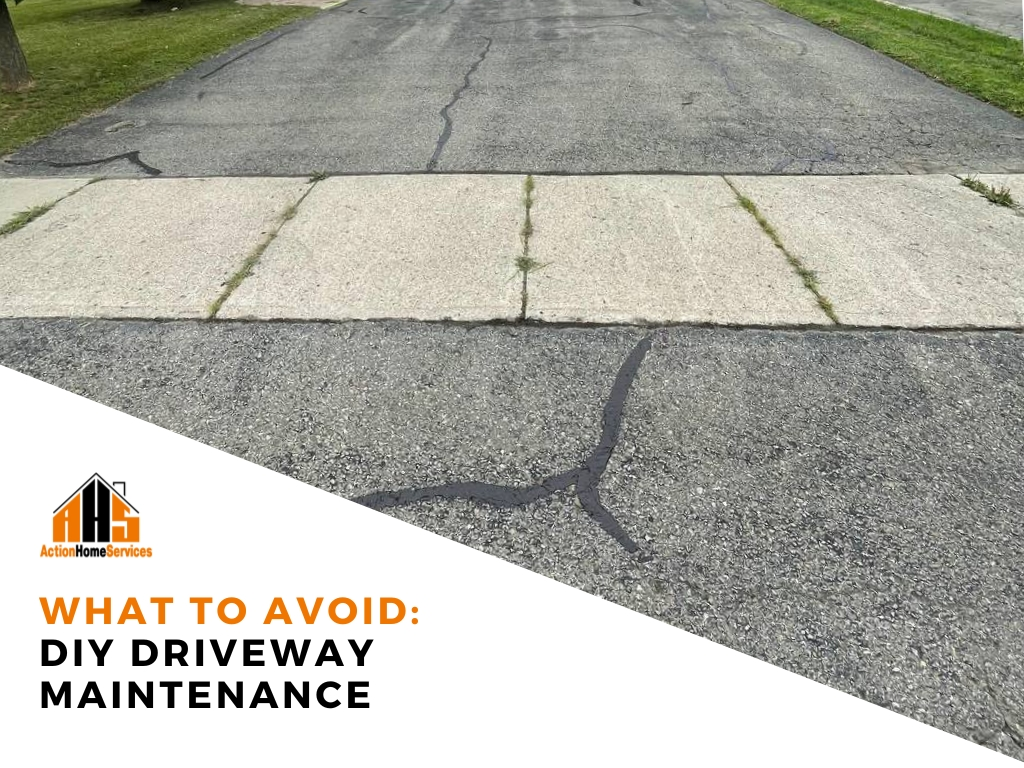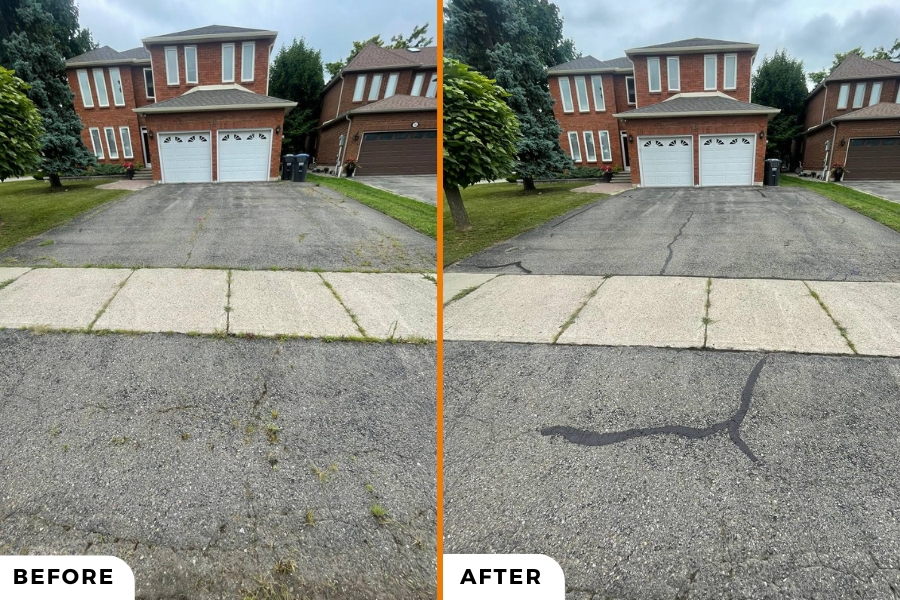
So, you want to DIY your driveway maintenance. It extends your driveway's health and keeps it fresh for any season. But if you’re not careful, you might ruin your driveway.
Let’s get into things to avoid when it comes to DIY driveway maintenance.
1. Skipping the Cleaning Step
Dirt may seem harmless here. But the truth is, skipping this step can mess up your entire project. Surface-level things like dirt, debris, oil, leaves, and anything under the sun on your driveway make it hard for sealants or crack fillers to stick. If your driveway and sealant don’t bond, it’s a waste of time and money.
What you can do instead
Before you start any repair or sealing work, sweep the entire surface well. If there’s grease or oil, scrub it with a degreaser. Using a professional-grade power washer can be helpful, too. Just make sure you give the surface enough time to dry afterward.
2. Not Filling Cracks Before Sealing
Sealing over cracks without fixing them first is a mistake. Moisture can be trapped in the cracks. Once that moisture freezes, it expands and then pushes those cracks wider apart.
Start by filling the cracks
Look for a high-quality crack filler meant for asphalt. Fill every visible crack before sealing. This might seem unnecessary, but it saves you from bigger problems down the line.
3. Using the Wrong Materials
Some cheaper sealants or water-based ones won’t hold up well, especially with changing temperatures and regular use. If you use low-quality stuff, the seal might start breaking down just a few months later.
What sealants should I use?
Go for oil-based sealants. They last longer and provide protection. And don’t forget to double-check that your crack filler is designed for the type of surface you’re working on.
4. Sealing When the Driveway's Still Wet
Even a little moisture can keep the sealant from bonding correctly. That leads to peeling, streaks, and patches that wear out faster.
Watching the sealant dry
Wait until the surface is completely dry. If you used a power washer, give it at least a full day to dry out. Also, check the weather. If it’s going to rain in the next 24 hours, don’t rush your seal your asphalt driveway.

5. Forgetting to Protect the Edges
Don’t forget the nooks and crannies! Sealant will stain pretty much anything it touches. You name it: curbs, walls, or even garden beds, the sealant loves staining.
How to protect driveway edges
Use painter’s tape, cardboard, or any kind of barrier to block off the edges. This prep can save you from hours of cleanup later.
6. Using Too Much Sealant
More isn’t better in this case. Pouring on a thick layer of sealant might seem like a good idea, but it can lead to a surface that’s sticky, uneven, and takes forever to dry. Plus, thick layers can trap dust and debris.
Less is more
Use thin, even coats. If one layer doesn’t give you the finish you want, wait for it to dry and then add another.
7. Not Checking the Weather
Weather can make or break your DIY driveway maintenance, the outside temperature can affect the sealcoating process and will therefore dictate your outcome. If it’s too cold, the sealant might not cure properly. If it’s too hot, it could dry too fast and end up uneven.
When is the best time of day for driveway sealant?
Aim for a day that’s milder in weather. Somewhere between 15°C and 27°C, and make sure the forecast is dry for at least two days after.
8. Driving On It Too Soon
We get it. You’ve just finished sealing and you’re ready to experience your new driveway. But good things come to those who wait. Driving on it too soon can leave tire marks or even pull the sealant up completely.
Be patient
Try to avoid walking on it for 24 to 48 hours and definitely don’t drive on it for at least 72 hours. The longer you can wait, the better the result will be.
9. Not Keeping Up With Maintenance
One big mistake people make is thinking that sealing once means the job’s done. But like anything else, your driveway needs regular attention. Ignoring little cracks or stains can let them turn into bigger issues fast.
Be consistent
Make it a habit to check your driveway every couple of months. Clean up any oil or rust stains as soon as you spot them, and fill small cracks before they spread.
You Got This!
Doing your own driveway work can be totally manageable, and you don’t need to be a pro. But like any DIY project, a little knowledge goes a long way. Avoiding these mistakes can help ensure your driveway stays in good shape for years. You also don’t have to carry this burden on your own. AHS is more than happy to provide advice on driveway maintenance for any concerns or questions you may have about DIYing your driveway.


